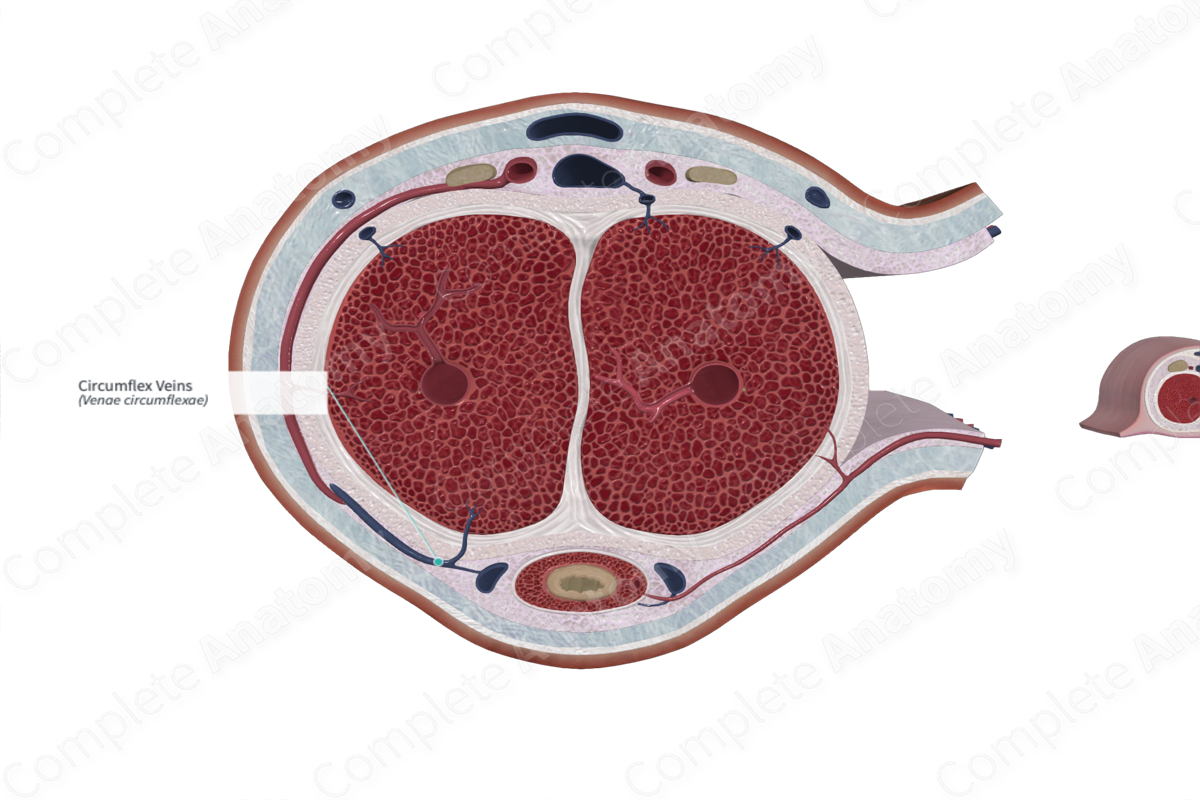
Quick Facts
Origin: Corpus spongiosum of penis.
Course: Passes around the penis in the fascia of the penis to the dorsal midline and terminates in the deep dorsal vein.
Tributaries: Emissary veins.
Drainage: Glans penis, corpus spongiosum and corpora cavernosa of body of penis.
Origin
The circumflex veins originate in the corpus spongiosum of the penis. They are only present in the distal two thirds of the penis.
Course
The circumflex veins pass around the circumference of the penile body, within and deep to the fascia of the penis (Buck’s fascia). They drain into the deep dorsal vein. There are usually between 3 and 10 circumflex veins (Standring, 2020).
Engorgement of the erectile tissue bodies of the penis compresses venous outflow, including circumflex and emissary veins and venous plexuses. This blocks blood return (veno-occlusive mechanism) leading to accumulation of blood and penile erection.
Tributaries
The circumflex veins receive emissary veins (draining the subalbugineal venous plexus). In some instances, the circumflex veins may receive tributaries from communicating veins in the subcutaneous tissue of the penis (Quartey, 2006).
Structures drained
The circumflex veins drain the glans penis and the erectile tissues in the distal two thirds of the body of the penis.
References
Quartey, J. K. M. (2006) 'Anatomy and Blood Supply of the Urethra and Penis', in Schreiter, F. and Jordan, G.H. (eds.) Urethral Reconstructive Surgery. Berlin, Heidelberg: Springer Berlin Heidelberg, pp. 11-17.
Standring, S. (2020) Gray's Anatomy: The Anatomical Basis of Clinical Practice. 42nd edn.: Elsevier Health Sciences.
